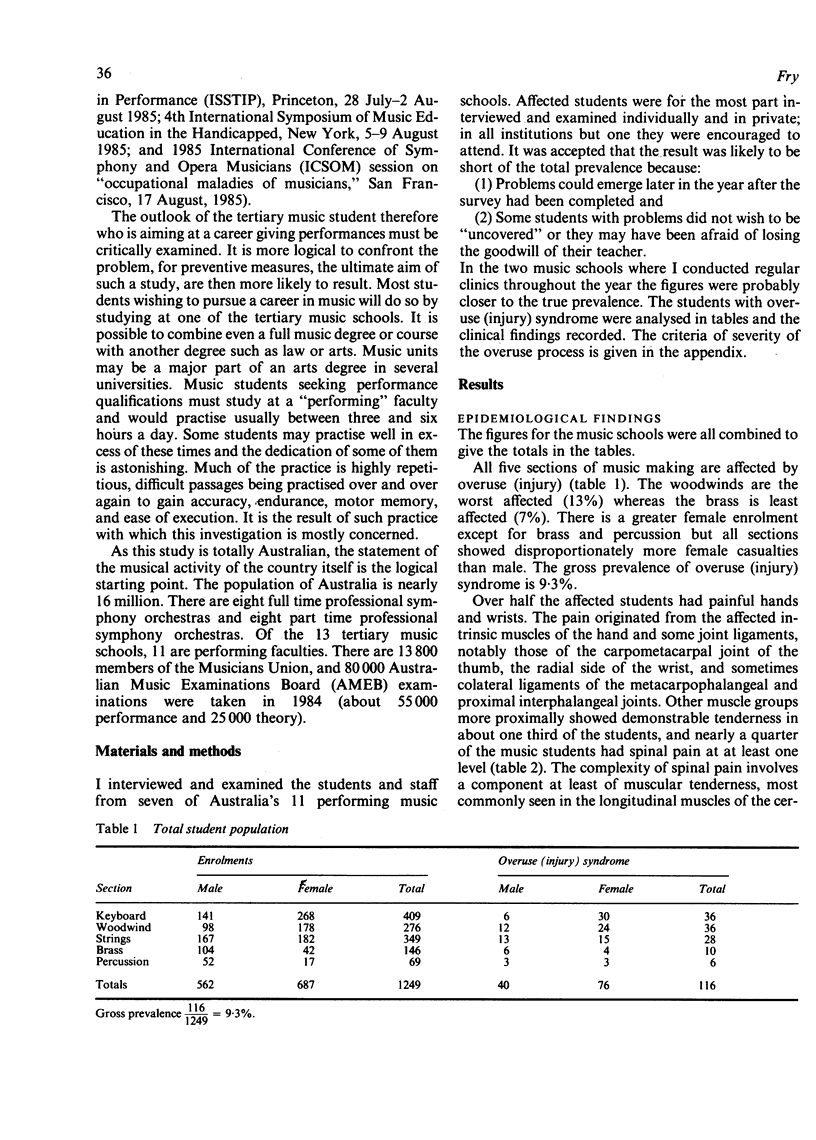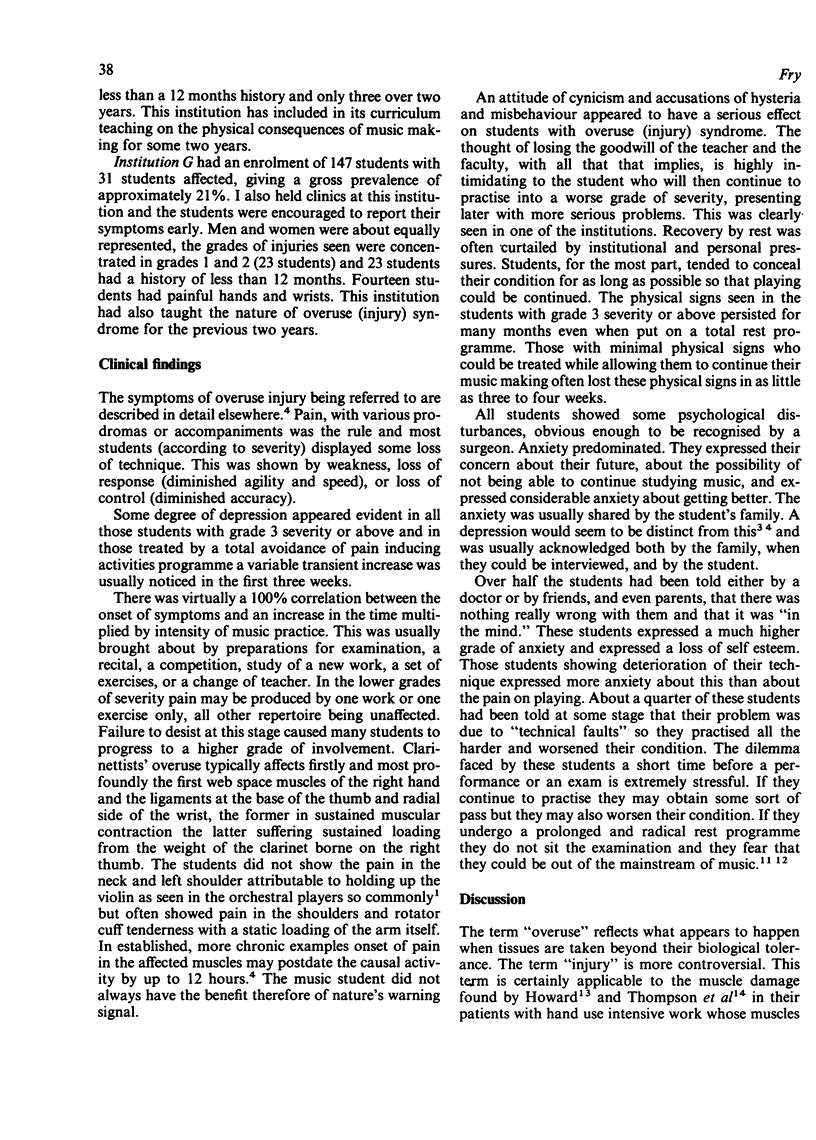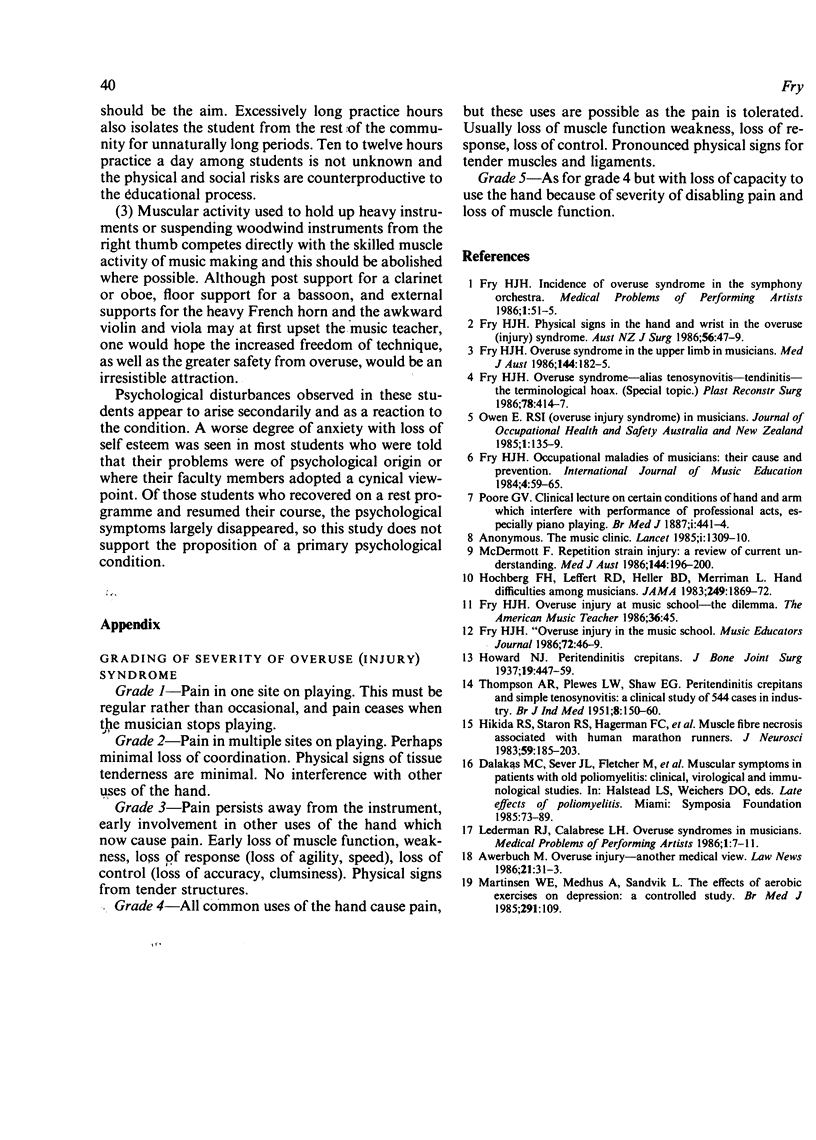Abstract
Overuse (injury) syndrome, common in musicians, is characterised by persisting pain and tenderness in the muscles and joint ligaments of the upper limb due to excessive use and in more advanced instances by weakness and loss of response and control in the affected muscle groups. This occurs typically in tertiary music students when their practice load is raised. In seven Australian performing music schools the minimum prevalence of the condition was found to be 9.3%. In two music schools where the study was more controlled the incidences were 13% and 21%. The factors leading to overuse (injury) syndrome may be identified as follows: the genetic factor of vulnerability which cannot be altered; the student's technique which may be influenced by teaching and application so that it is more "energy efficient"; and the time X intensity of practice which is totally within the student's control. Prevention involves education of staff and students about the overuse process, rationalisation of practice habits and repertoire, abolition or reduction of static loading of the weight of the instruments, and earlier reporting when the problem is most easily corrected. Psychological problems arising in this syndrome appeared to occur as a reaction to the condition rather than as a causal factor.
Full text
PDF





Selected References
These references are in PubMed. This may not be the complete list of references from this article.
- Fry H. J. Overuse syndrome of the upper limb in musicians. Med J Aust. 1986 Feb 17;144(4):182-3, 185. doi: 10.5694/j.1326-5377.1986.tb128353.x. [DOI] [PubMed] [Google Scholar]
- Fry H. J. Overuse syndrome, alias tenosynovitis/tendinitis: the terminological hoax. Plast Reconstr Surg. 1986 Sep;78(3):414–417. doi: 10.1097/00006534-198609000-00025. [DOI] [PubMed] [Google Scholar]
- Fry H. J. Physical signs in the hand and wrist seen in the overuse injury syndrome of the upper limb. Aust N Z J Surg. 1986 Jan;56(1):47–49. doi: 10.1111/j.1445-2197.1986.tb01819.x. [DOI] [PubMed] [Google Scholar]
- Hikida R. S., Staron R. S., Hagerman F. C., Sherman W. M., Costill D. L. Muscle fiber necrosis associated with human marathon runners. J Neurol Sci. 1983 May;59(2):185–203. doi: 10.1016/0022-510x(83)90037-0. [DOI] [PubMed] [Google Scholar]
- Hochberg F. H., Leffert R. D., Heller M. D., Merriman L. Hand difficulties among musicians. JAMA. 1983 Apr 8;249(14):1869–1872. doi: 10.1001/jama.249.14.1869. [DOI] [PubMed] [Google Scholar]
- Martinsen E. W., Medhus A., Sandvik L. Effects of aerobic exercise on depression: a controlled study. Br Med J (Clin Res Ed) 1985 Jul 13;291(6488):109–109. doi: 10.1136/bmj.291.6488.109. [DOI] [PMC free article] [PubMed] [Google Scholar]
- McDermott F. T. Repetition strain injury: a review of current understanding. Med J Aust. 1986 Feb 17;144(4):196–200. doi: 10.5694/j.1326-5377.1986.tb128357.x. [DOI] [PubMed] [Google Scholar]
- THOMPSON A. R., PLEWES L. W., SHAW E. G. Peritendinitis crepitans and simple tenosynovitis; a clinical study of 544 cases in industry. Br J Ind Med. 1951 Jul;8(3):150–158. doi: 10.1136/oem.8.3.150. [DOI] [PMC free article] [PubMed] [Google Scholar]


